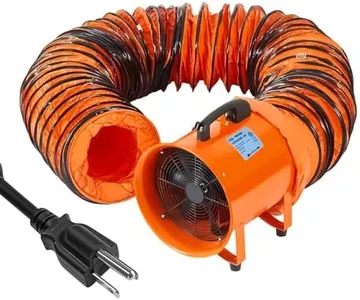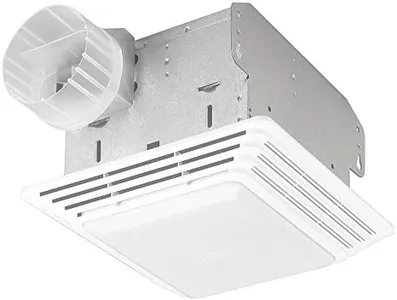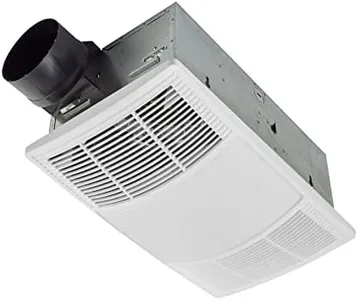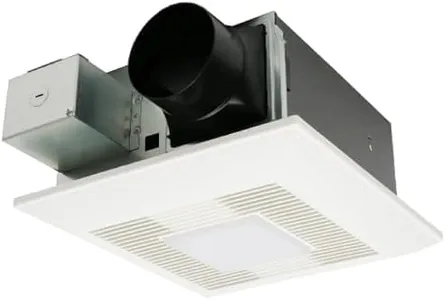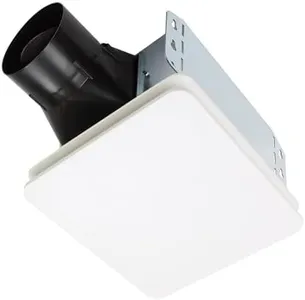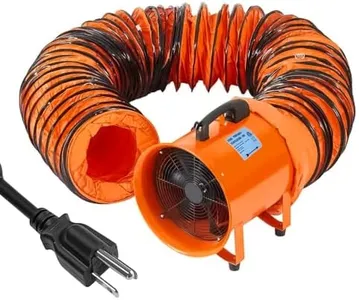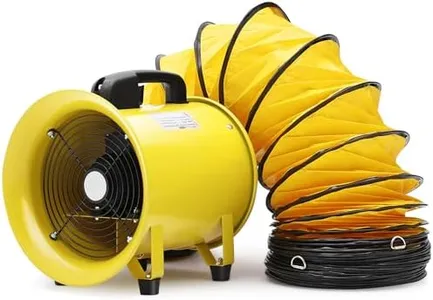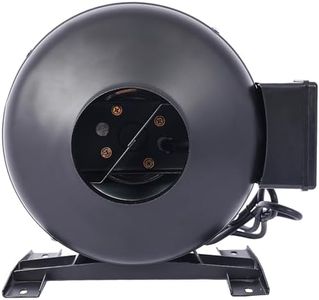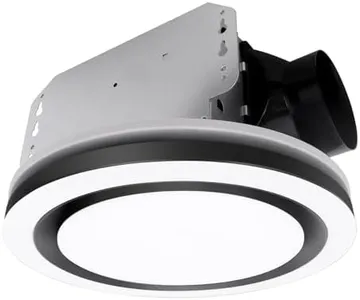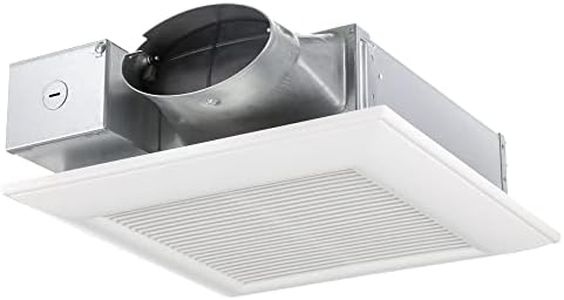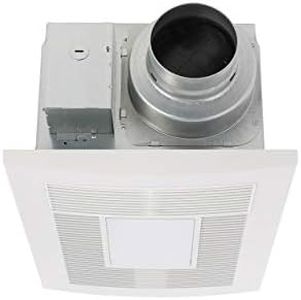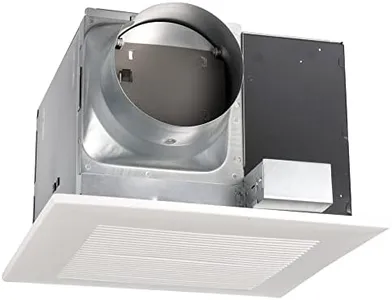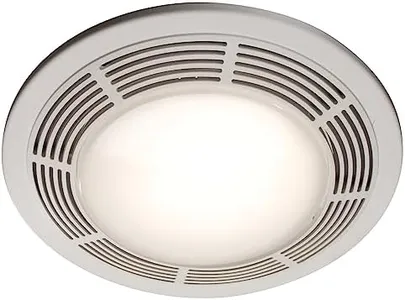10 Best Bath Fans 2025 in the United States
Our technology thoroughly searches through the online shopping world, reviewing hundreds of sites. We then process and analyze this information, updating in real-time to bring you the latest top-rated products. This way, you always get the best and most current options available.

Our Top Picks
Winner
Broan-NuTone 678 Ventilation Fan and Light Combo for Bathroom and Home, 100 Watts, 50 CFM,White
The Broan-NuTone 678 Ventilation Fan and Light Combo is designed for small rooms, including bathrooms up to 45 square feet. With an airflow capacity of 50 CFM, it is suitable for ventilating smaller spaces effectively. The noise level is mildly noticeable at 2.5 sones, which is moderate but might be a bit loud for some users seeking quieter operation.
It boasts a shatter-resistant light diffusing lens for durability and quality lighting. Installation is made user-friendly with polymeric duct connectors and a plug-in, permanently lubricated motor, making it a good choice for DIY enthusiasts. The design is practical, featuring a white polymeric grille that blends well with most decors.
One notable feature is its dual functionality as both a light and exhaust fan, adding convenience but lacking advanced functions like humidity sensors or timers which are available in some higher-end models. It fits standard electrical plugs and does not require batteries, simplifying its setup and use. This product is ideal for users needing a basic, reliable fan and light combo for small bathrooms. It excels in ease of installation and practical design but may fall short in energy efficiency and quietness for some users.
Customer Highlights
A summary of real customer reviews to highlight what shoppers are saying!Broan-NuTone SPK110RGBL ChromaComfort Bathroom Exhaust Fan, 110CFM/1.5 Sones, with Sensonic Bluetooth Speaker and 24-color LED Light, Wall Switch included, White
The Broan-NuTone SPK110RGBL ChromaComfort Bathroom Exhaust Fan is designed to enhance both the ventilation and ambiance of your bathroom. With an airflow capacity of 110 CFM and a noise level of just 1.5 sones, it operates quietly while effectively removing humidity and odors. This makes it a solid choice for those looking to maintain a comfortable and fresh bathroom environment.
One of the standout features is the integrated Sensonic Bluetooth speaker, which provides clear sound for your favorite music, making your bathroom visits more enjoyable. The 24-color LED light adds a customizable touch, letting you set the mood however you like. The app connectivity allows for easy control from your phone, although it may not be compatible with all smartphones, such as Samsung Galaxy S21 or Google Pixel 6.
Installation is made simpler with the EZDUCT connector, which does not require attic access, making it suitable for various installation scenarios. However, the installation guide could be more prominent and detailed for those who might need extra guidance. While the fan does deliver on performance, some users may find the reliance on batteries for the wall control inconvenient; two AAA batteries are required but not included.
Customer Highlights
A summary of real customer reviews to highlight what shoppers are saying!Broan-NuTone BHFLED80 PowerHeat Bathroom Exhaust Fan, Heater, and LED Light Combination, 80 CFM
The Broan-NuTone BHFLED80 PowerHeat is a versatile bathroom exhaust fan that combines fan, heater, and LED light functionalities. With an airflow capacity of 80 CFM, it effectively ventilates small to medium-sized bathrooms, preventing moisture buildup. Its noise level is relatively low at 1.5 sones, ensuring a quiet operation that won't disrupt your household.
The integrated 1300-watt heater is powerful enough to provide efficient heating, making your bathroom comfortable even during colder months. The LED light is dimmable and offers three color options, which can also act as a convenient nightlight, adding to the product's multifunctionality. The design is compact, fitting well into standard 2" x 6" ceiling constructions, and features a white grille that blends with most decors.
Installation might require some effort as assembly is needed, but the rugged galvanized steel housing ensures durability. This fan is best suited for those who need a multi-functional unit and have a standard-sized bathroom. Its additional features like color-adjustable LED lighting and the powerful heater make it a compelling choice even with the potential trade-off in energy efficiency.
Customer Highlights
A summary of real customer reviews to highlight what shoppers are saying!Buying Guide for the Best Bath Fans
Choosing the right bath fan is essential for maintaining good air quality and preventing moisture-related issues in your bathroom. A bath fan helps to remove excess humidity, odors, and airborne contaminants, ensuring a comfortable and healthy environment. When selecting a bath fan, consider the size of your bathroom, the noise level, energy efficiency, and additional features that may enhance your experience. Here are some key specifications to help you make an informed decision.FAQ
Most Popular Categories Right Now
